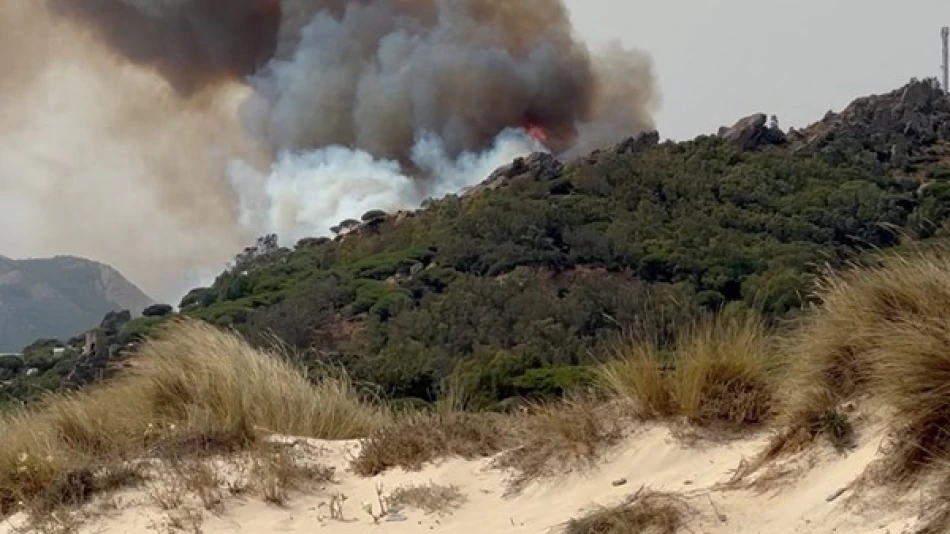
Wildfires Force Evacuation of Thousands in Spain's Scenic Regions
Spain Battles Suspected Arson as Wildfires Force Mass Evacuations Near UNESCO Heritage Site
More than 1,000 people have been evacuated from northwestern Spain as wildfires tear through the region, threatening a UNESCO World Heritage site and raising serious questions about potential arson during the country's second consecutive week of extreme heat. Local authorities suspect deliberate ignition behind multiple blazes that are proving difficult to contain due to shifting winds and temperatures approaching 40°C.
Heritage Site Under Threat as Evacuations Spread
The evacuations highlight the severity of Spain's current wildfire crisis, with approximately 400 people displaced from the town of Carucedo and surrounding areas, while another 700 residents were forced to flee communities near Las Médulas. This UNESCO World Heritage site, renowned for its striking landscapes shaped by Roman-era gold mining operations, now faces direct threat from the advancing flames.
The targeting of such a culturally significant area underscores how climate-driven disasters increasingly threaten irreplaceable historical sites across Europe. Las Médulas represents nearly two millennia of geological and cultural heritage that cannot be rebuilt if destroyed.
Arson Investigation Adds Criminal Dimension
Alfonso Mañueco, head of the regional government in Castile and León, revealed that experts suspect many of these fires were deliberately set. This criminal element transforms what might otherwise be viewed as a natural disaster into a case of environmental terrorism during peak fire season.
Spain has historically struggled with intentional fire-setting, whether for land clearing, insurance fraud, or simple vandalism. The timing during extreme weather conditions suggests either opportunistic criminals or coordinated attacks designed to maximize damage when firefighting resources are already stretched thin.
Firefighting Efforts Hampered by Perfect Storm Conditions
Firefighters report that the combination of extreme heat and erratic wind patterns is severely hampering containment efforts. These shifting winds make it nearly impossible to predict fire behavior, forcing crews into reactive rather than proactive strategies.
The meteorological conditions mirror those seen during catastrophic fire seasons in California and Australia, where similar combinations of heat, wind, and dry vegetation create explosive fire growth. Spain's Mediterranean climate increasingly resembles these fire-prone regions as climate change intensifies.
Regional Spread Signals National Crisis
The fires have now spread beyond the initial zones to affect Galicia and Navarre in northern Spain, indicating this is not an isolated regional event but part of a broader national emergency. Civil protection authorities have issued warnings that fire risk remains high to extreme across most of the country through Thursday.
This geographic spread suggests Spain may be entering a new phase of fire season severity, similar to what Portugal experienced during its devastating 2017 fires or Greece during recent summer blazes. The pattern indicates that northern Spain, traditionally less fire-prone than the south, is becoming increasingly vulnerable.
Economic and Tourism Implications
Beyond immediate safety concerns, these fires threaten Spain's crucial tourism sector during peak summer season. UNESCO sites like Las Médulas attract international visitors whose spending supports local economies. Prolonged closures or damage could impact regional tourism revenue for years.
The suspected arson element also raises questions about security preparedness during high-risk periods, potentially requiring increased surveillance and patrol resources that strain municipal budgets already dealing with firefighting costs.
Most Viewed News

 Layla Al Mansoori
Layla Al Mansoori






